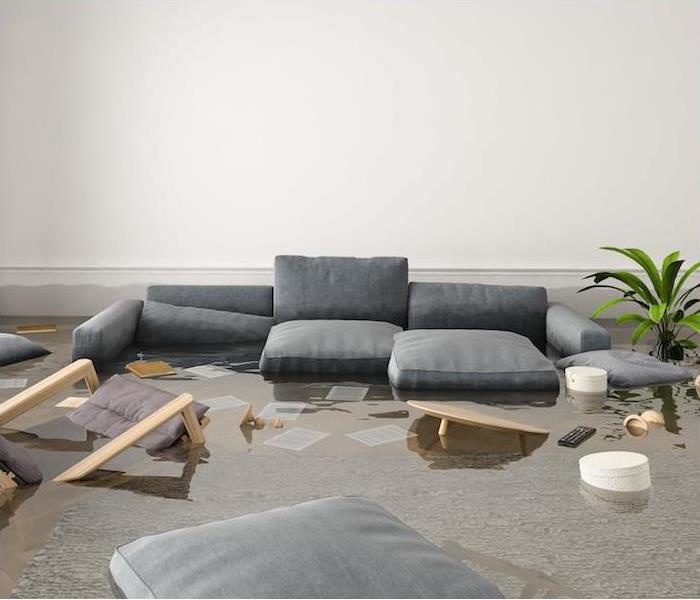Steps to Protect Your Home From Water Damage | SERVPRO of Kingston/New Paltz
2/15/2019 (Permalink)
Water damage is one of the most common and costliest disasters your home may suffer. Things like a burst pipe, a malfunctioning dishwasher or storm damage are just some of the many ways water damage could strike your home.
There are a number of steps you can take to protect your home from water damage. Read on as we take a look.
Protecting Your Home
Water damage may not seem like much of a hassle for you to deal with, but drying out and cleaning up will prove to be tedious, not to mention there is a good possibility mold will follow. Mold is a very common side effect of water damage, as mold can begin to grow and flourish within 24–48 hours of moisture exposure.
When considering ways to safeguard your home, it may be helpful to break it down by areas of impact, such as by basements, kitchens, bathrooms, flooring and ceilings.
In the basement, you can prevent water damage by preventing water seepage, which can be done by resealing vulnerable areas of the basement, making sure water drains away from your home and installing a backwater valve.
Kitchens and bathrooms may experience water damage as a result of plumbing issues and/or appliance failures.
Make it a point to regularly:
- Inspect all appliances for issues with hoses and faucets
- Check the seals and caulking around your showers and tubs to make sure there is no leakage
- Know where the main shut-off valve is in your home
- Don’t leave your washing machine or dishwasher running when you are not home
While we would like to protect our possessions in our home from water damage, that is not always possible, but there are things you can do to at least decrease the amount of damage. When storing items in a basement, it is best to use waterproof bins, as well as store items on shelves up off of the floors.
Recovering From Water Damage
If you have suffered water damage to your home, there is a good chance you can salvage items that can be dried out within 48 hours.
The first step is to contact your insurance provider immediately and evaluate the extent of damage to your home and possessions as well as identify the type of water that is involved.
The three types of water are:
Clean water is water from rain, condensation, leaky pipes, etc.
Gray water is water from dishwashers, washing machines, clean toilets, etc.
Black water is water from sewage or serious flooding from nearby rivers, etc. and can cause serious health problems.
Following a water damage disaster, you will need to dry your home out quickly by removing wet objects and dehumidifying the area. You must then disinfect all remaining materials.
Pro tip: By freezing wet books, photos and papers in a frost-free freezer, you allow yourself some extra time to deal with them. Doing this prevents mold and mildew from developing and causing more deterioration. Once able, you can remove them from the freezer and air-dry or fan-dry the pages.
It may seem like recovering from water damage is an overwhelming and slightly impossible task, but it doesn’t have to be. You can call on the highly trained experts at SERVPRO of Kingston/New Paltz at 845-255-4334. We are here to make it "Like it never even happened."





 24/7 Emergency Service
24/7 Emergency Service
